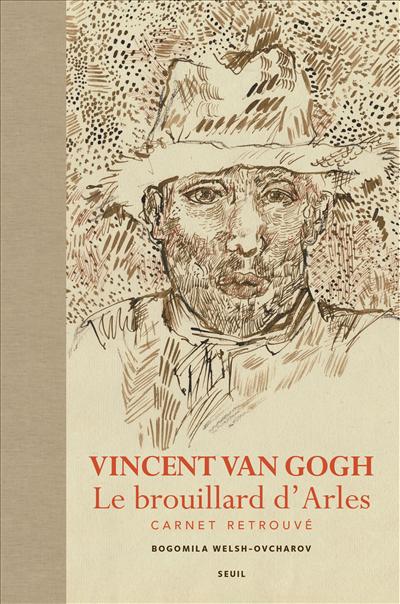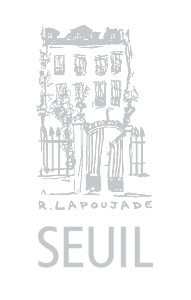Actualités
Van Gogh - press statement
Press statementLes Editions du Seuil recently published a book, Vincent Van Gogh, le Brouillard d'Arles, Carnet retrouvé, which is now eliciting a major controversy between experts. The technical answers below are made by the author of the book, Ms Bogomila Welsh-Ovcharov, and, to put an end to this controversy, we are offering the Van Gogh Museum the possibility of jointly organizing, within a reasonable time frame, a public debate between experts. This will also be an opportunity to shed light on the conditions under which the Van Gogh Museum is claiming the de facto right to a monopoly of attribution.
The specialists of the painter deplored the absence of this artist’s sketchbooks for the periods of intense creation when he stayed at Arles and Saint-Remy-de- Provence. This gap was filled by the discovery of sixty-five drawings certified by the careful appraisal, based on scholarly and scientific research studies, undertaken by Ms Bogomila Welsh-Ovcharov, professor emeritus in the Department of Fine Arts of Toronto, an internationally acclaimed art historian, who was the curator for several major exhibitions, in particular at the Van Gogh Museum in Amsterdam, as well as the “Van Gogh in Paris” inaugural exhibition at the Musée d’Orsay in 1988. She is currently the co-curator of a major exhibition at the Ontario Museum in Toronto, “Mystical landscapes: masterpieces from Monet, Van Gogh and more”. Ms Welsh-Ovcharov has secured the expertise of many specialists, including Ronald Pickvance, an internationally renowned art historian, who, for sixty years, worked on the life and work of Van Gogh.
The book, based on this exceptional discovery, constitutes a major breakthrough in the understanding of Van Gogh’s work.
Here, point by point, are the answers that Ms Bogomila Welsh-Ovcharov wishes to give following the communique issued by the Van Gogh Museum on 15 November 2016:
“Characteristic style is not in evidence”
The iconography and draftsmanship of the drawings reflect Van Gogh’s development as a draftsman. Van Gogh’s sketchbook should be viewed as the artist’s personal confrontation of motifs in situ between Spring of 1888 to the Spring of 1890. Van Gogh’s drawings reveal his ability to draw both swiftly and at times searching new means of personal expression by means of his varied use of the reed pens and brush.
“Brownish ink not typical”
A selection of drawings from the Ginoux album has been subjected to an analysis of the composition of the brown ink used. It revealed that Van Gogh was not using a logwood ink but another sepia-based ink. It is known that he was familiar with various types of inks and was using them from his earliest creative years. In his letters to Theo in 1881 and 1883, he explained for instance that he had used a mixture of chalk and sepia ink to draw or make ink wash paintings.
“Topographical errors”
Van Gogh's sketchbook drawings confirm that the artist at times was more interested in the composition than in the actual architectural structure for his motifs, as it can be observed in some of his paintings. For example, the two drawings of the asylum in Saint-Rémy. On the other hand, some of his drawings show that Van Gogh walked actually to specific sites to capture a first idea of a motif, which he later used to compose a painting.
“Sketchbook’s provenance raises many questions”
The Museum is relying on information received in 2007 and not on the information based on archival research provided in the actual book.
A small daily journal of the Café de la Gare which has survived records that on the 20th of May 1890 Dr Félix Rey visited the Café on behalf of the artist Van Gogh and left for Mr and Mrs Ginoux a « grand carnet de dessins ». This incontestable contemporary record establishes how the sketchbook arrived at the café de la Gare. All the following provenance was based on historical documentation and archival research, including the testimony of
the present owner whose family is linked to the proprietor of the establishment of the café on the ground floor of the Yellow House by the Summer of 1930.
“Notebook seems unreliable”
The notebook of the Café de la Gare has been researched and verified as an incontestable contemporary document of the period. It records some of the names of persons who lived and were known during Van Gogh’s life in Arles. The names have been researched and confirmed by an expert who established a data base of persons living in the “quarter” around the Yellow House during Van Gogh’s lifetime.
The two-sided page of the notebook dated 19 June was inadvertently kept by the family and therefore could not be reproduced in the book. It is perfectly distinct and different from the page dated June 10 contained in the book. This page not reproduced does not change the analysis or my conclusion.
As Ronald Pickvance stated to the New York Times on November 15, 2016, there is no chance the book or the 65 drawings are forgeries. “These are absolutely O.K., from one to 65,” he said. “ End of song, end of story.”
Paris, November, 17th 2016.
Agenda
Actualités
Le Roi des vagabonds de Patrick Spät et Bea Davies
À l’occasion de la parution de la bande dessinée Le Roi des vagabonds, écrite par Patrick Spät et illustrée par Bea Davies, en coédition avec Dargaud, découvrez l’histoire de Gregor Gog.Méconnu de l’Histoire, Gregor Gog (1891-1945) fonda la « Confrérie des vagabonds » en 1927 pour venir en aide aux sans-abris et les organiser politiquement. Deux ans plus tard, il organise le « Congrès international du vagabond » et appelle à une « grève générale de vie ».





